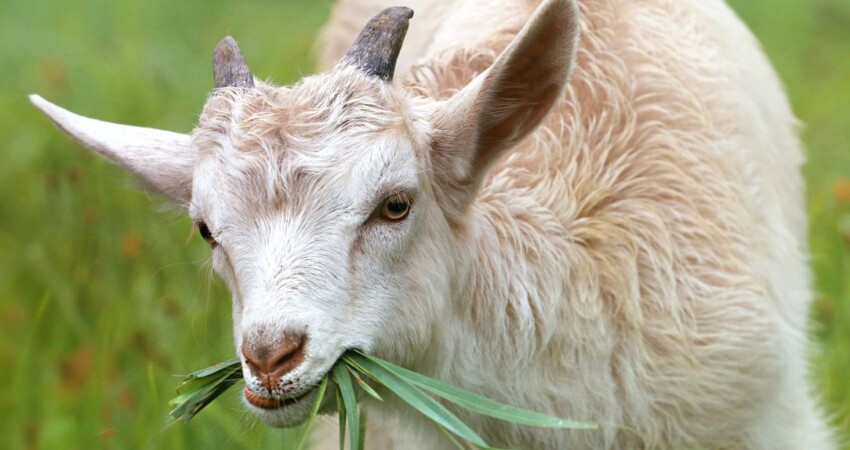

Ruminants are animals that have a four-part stomach and can digest the fibre (mainly cellulose) in plants. These parts are called the rumen, reticulum, omasum and abomasum. The large rumen makes up about 80% of the total volume. Ruminants also have cloven hooves and have their top teeth replaced by a hard dental pad. The farm ruminants (cows, sheep, goats, deer) harvest their feed using a long “pre-hensile” (grasping) tongue, and regurgitate their feed for a second chewing – called rumination or chewing the cud.
A goat spends about 8 hours a day grazing, and the rest of her time is spent ruminating, idling, walking, drinking, resting and sleeping. There is usually an idling period straight after grazing and this is when initial rumen fermentation starts.
Feed is first harvested by the cow, chewed, and with the addition of saliva (70-100 litres/ day) which contains a digestive enzyme, is passed into the rumen in the form of a ball or bolus. Here, bacterial fermentation of cellulose takes place in this large organ which has many papillae or wrinkles on the inside to increases surface area. The rumen constantly moves in waves to mix the contents and expel the gas.
Methane and carbon dioxide are produced from fermentation and these gases escape as the animal belches. The cow uses its diaphragm to help put pressure on the rumen to help in belching. Bloat is caused by these gases becoming bound up in foam (caused by some plants such as clovers) and is unable to escape from the rumen.
Ammonia is also produced, but unlike methane and carbon dioxide which is wasted, it is used and converted into urea and bacterial protein. When the bacteria die the protein is made available to the animal. The other products of digestion in the rumen are acids. These are not the same kind of acids as those found in the fourth stomach or abomasum. Rumen acids are fatty acids such as acetic and butyric – the ones you find in silage.
The rumen flora as well as breaking compounds down also build them up. They build up proteins which are digested by the animal when they die. They can also synthesise all the water soluble vitamins needed.
The bacterial flora in the rumen take time to grow and multiply, so it’s bad practice to change a ruminant’s diet quickly. Diet changes should be done slowly to give the flora time to change. If you don’t, digestive upsets will occur and the cow will stop eating.
 Contact Jaguza Support
Contact Jaguza Support